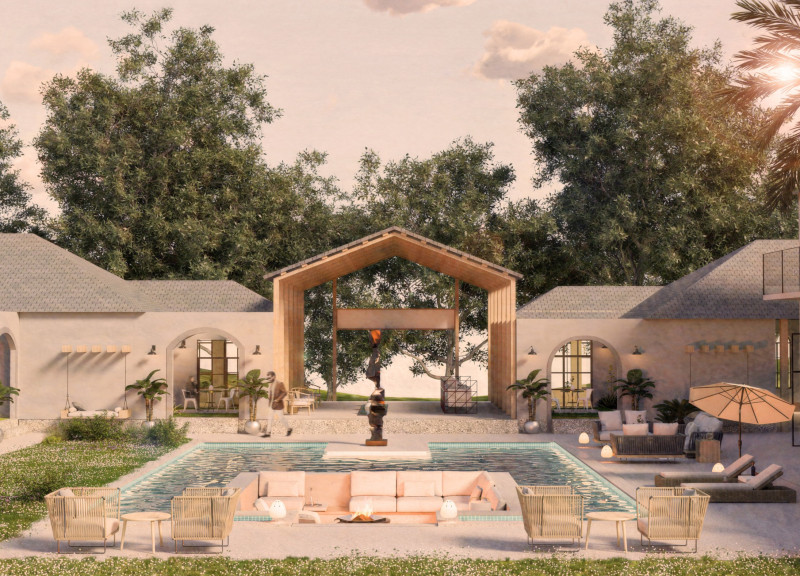5 key facts about this project
The Tili Vini Guest Homes project is located in the tranquil Umbrian valley, serving as a retreat for those who appreciate wine and nature. It combines traditional Italian architecture with modern design, aiming to create a space focused on sustainability and community. By arranging the buildings around a central courtyard, it provides a setting that encourages both privacy and social interaction among guests, facilitating a sense of connection.
Architectural Layout
The arrangement centers on a semi-open courtyard, which helps define the layout and creates an inviting atmosphere. Each guest house includes an internal patio that ensures an abundance of natural light and encourages proper airflow. This thoughtful design fosters comfort and establishes a link between indoor and outdoor spaces, enhancing the overall guest experience.
Material Choices
Material selection plays a significant role in the project, emphasizing environmentally friendly options. Cork panels are used as the external wall covering. They are renewable and provide excellent insulation, helping to lower energy use while also improving sound quality within the buildings. Interior walls are finished with natural plaster, offering a healthier alternative to conventional paints, thereby contributing positively to indoor air quality.
Functional Spaces
The design incorporates flexible social areas that serve different purposes. A central gathering space features amenities like a heated pool, sauna, and open-air cinema. These areas are intended for leisure and relaxation but also support educational activities, such as workshops related to wine production. This dual purpose enriches the experience for all guests.
Natural Integration
Strategically placed windows enhance natural light and provide stunning views of the surrounding mountains. The building façade is characterized by large windows and a balanced design that reflects traditional Italian architecture while incorporating modern elements. Rainwater harvesting systems are included in the design, allowing for responsible management of resources by capturing rainwater for irrigation and non-drinking uses.
The overall design emphasizes a thoughtful interaction between the built environment and the beautiful natural landscape, shown in the courtyard's inviting atmosphere. It encourages guests to engage with each other while enjoying the scenic backdrop of the Umbrian valley.






















































